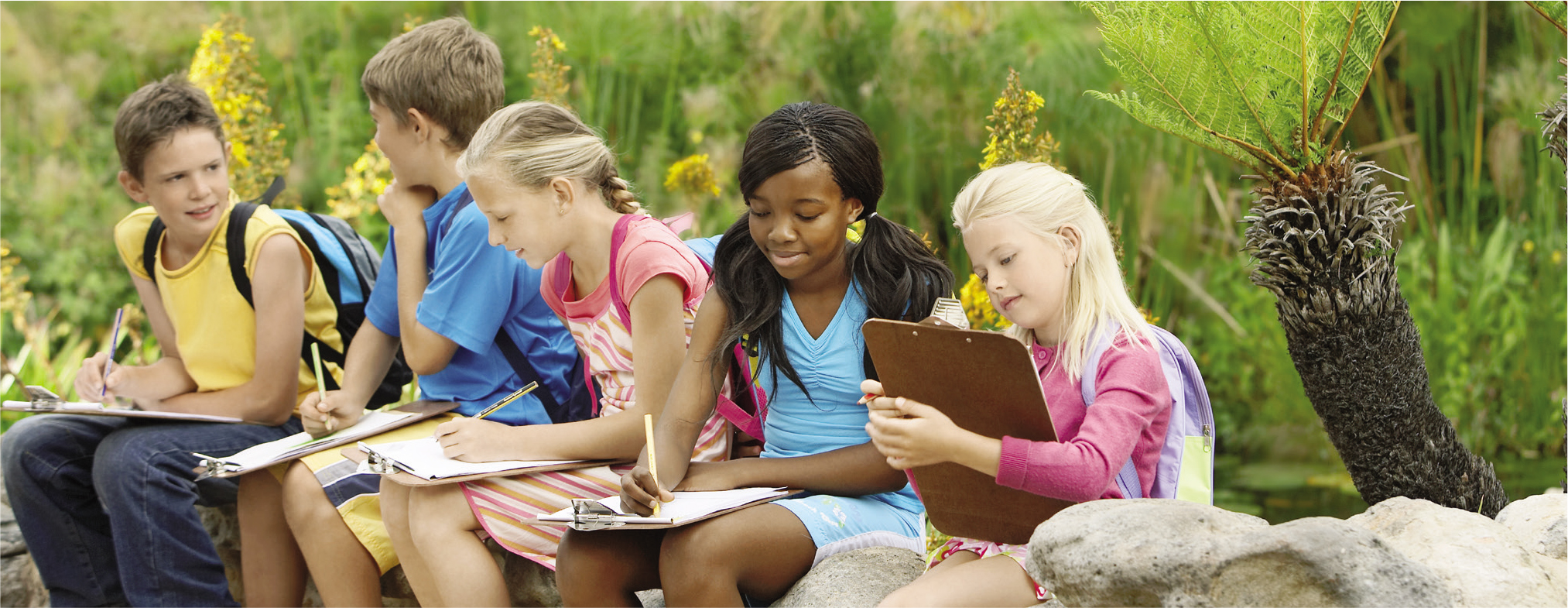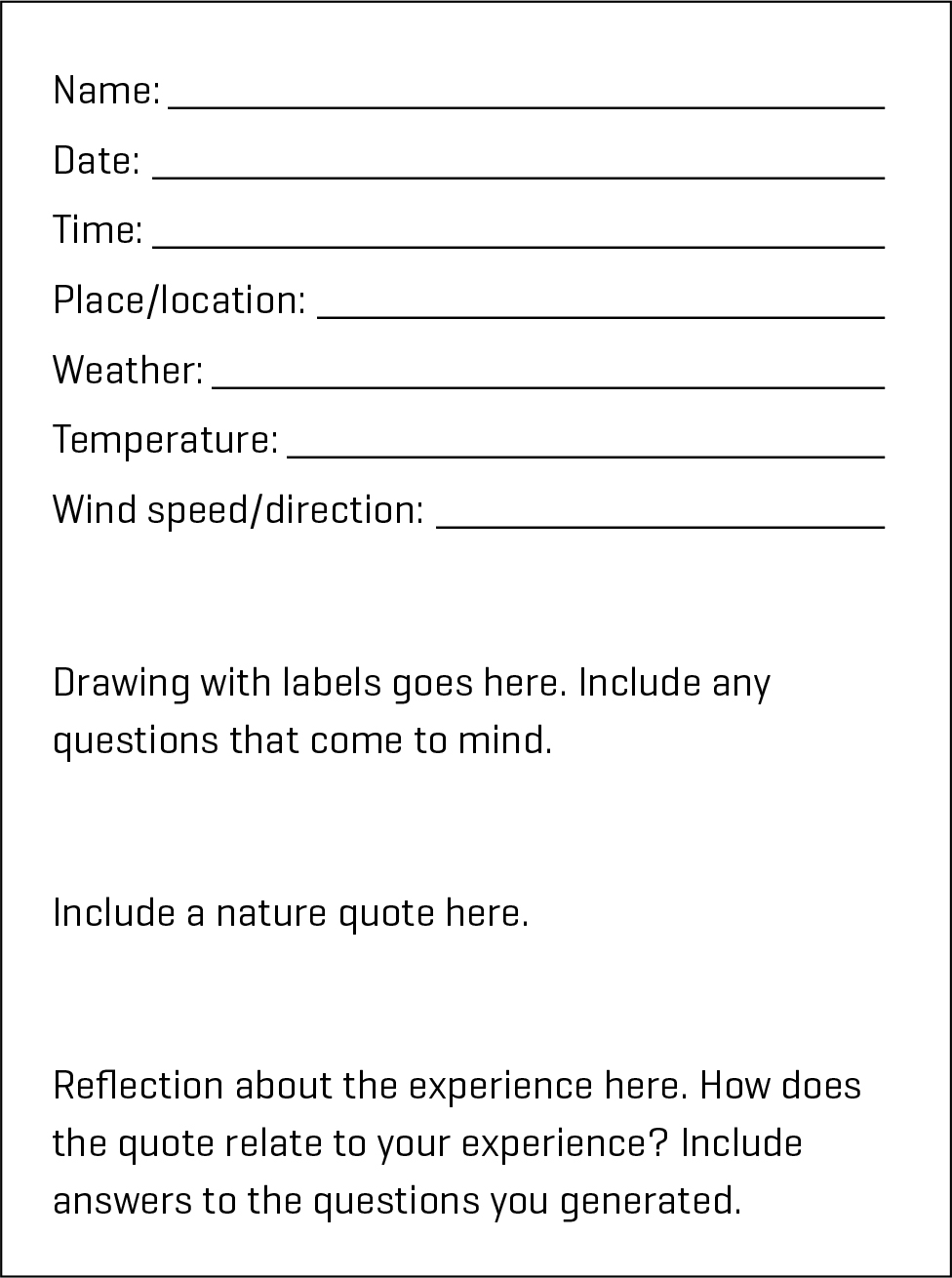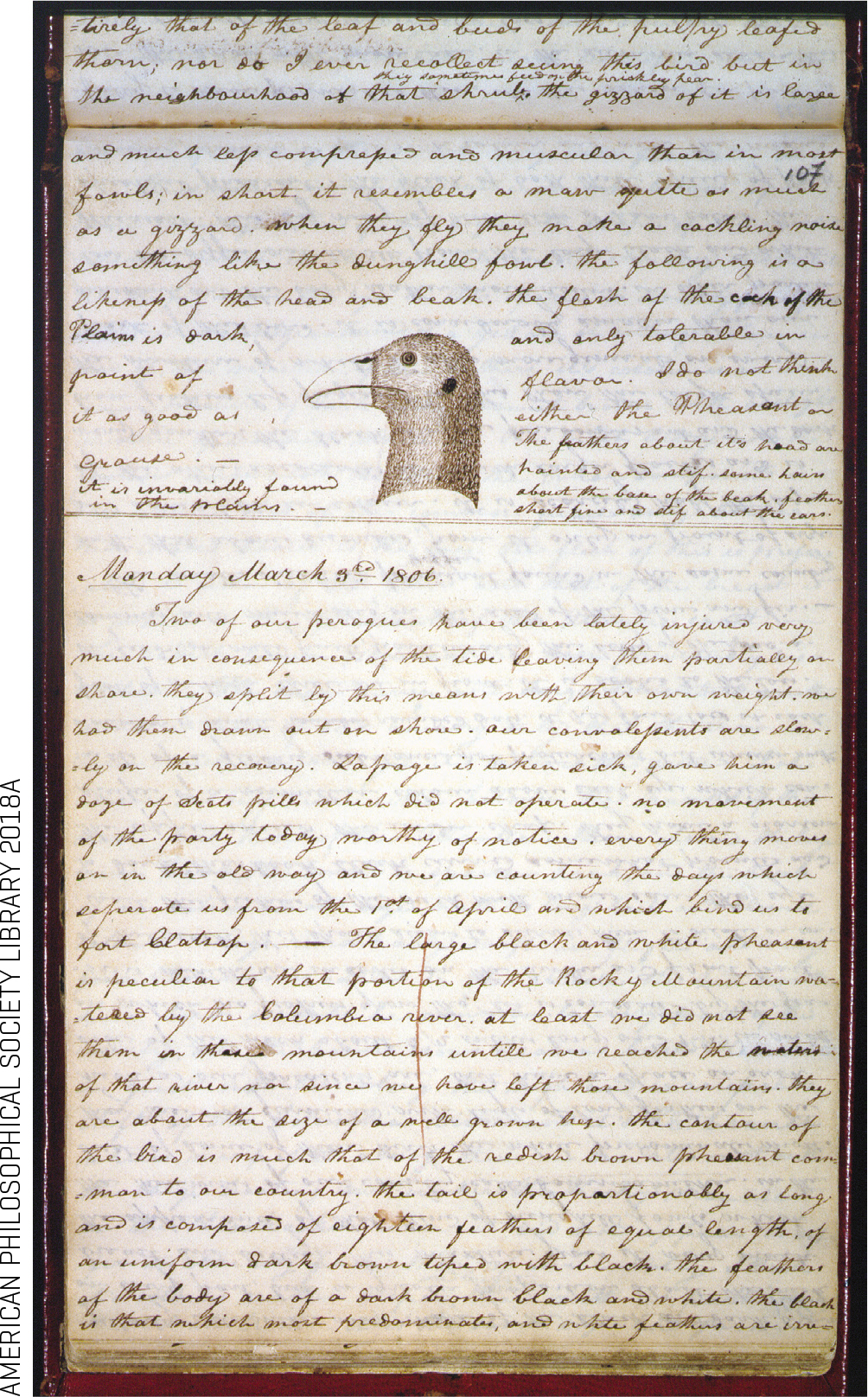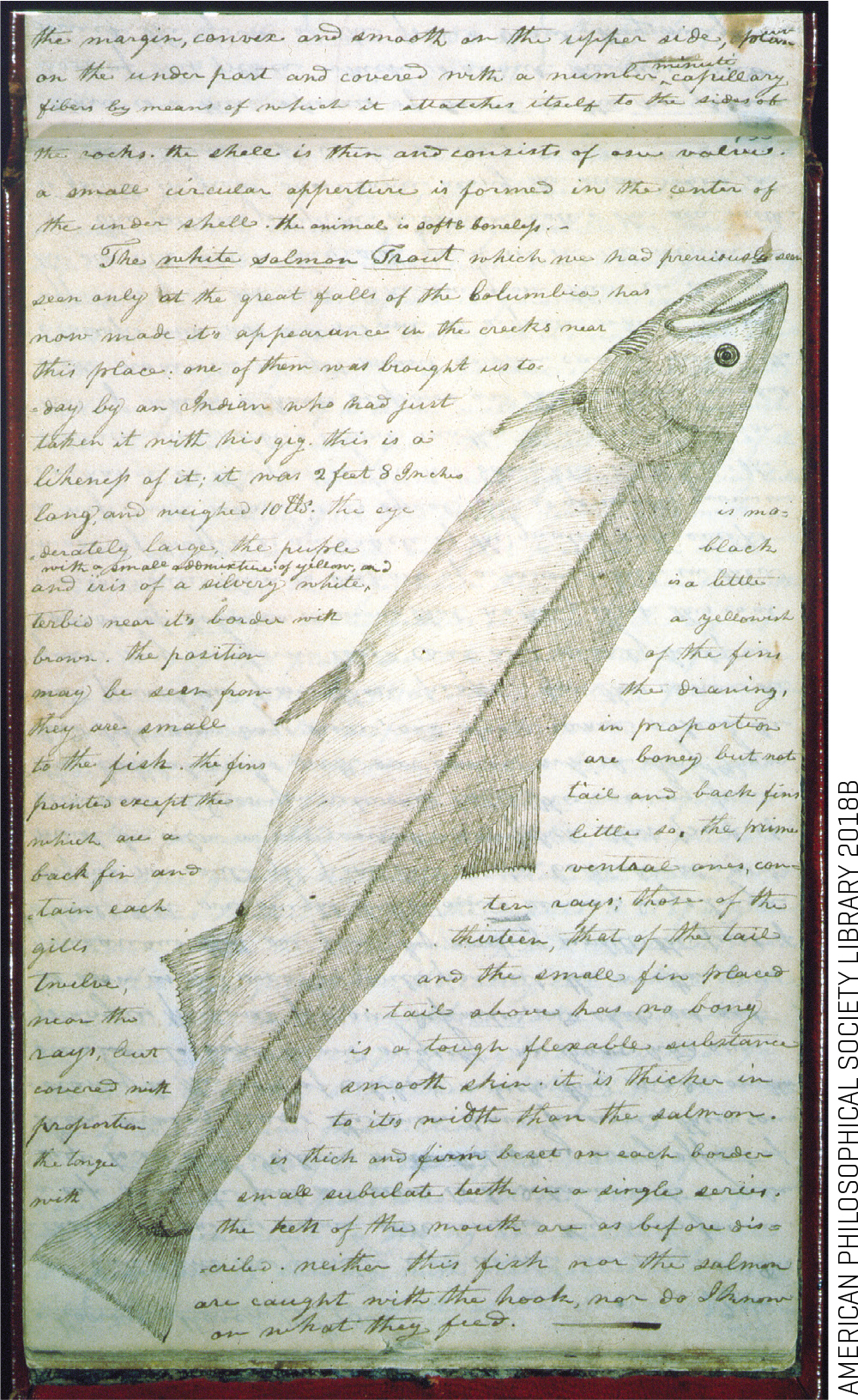Sharing the Wonder of Natural History
Sharing the Wonder of Natural History
By Ashley Campbell, Brigette Whaley

Help students overcome nature-deficit disorder with these outdoor activities.
In response to changes in society, terms such as “nature-deficit disorder” (Louv 2005) and “plant blindness” (Wandersee and Schussler 1998) have surfaced in the literature over the past 20 years. According to Louv (2005, p. 36), “nature-deficit disorder describes the human costs of alienation from nature.” It is the result of people spending more time indoors on electronic devices than outdoors experiencing nature. He cites attention issues and even physical and emotional illness linked to people who spend too much time indoors. Limited exposure to the outdoors can also result in plant blindness, which describes a person’s inability to recognize local plants and their importance to the ecosystem (Wandersee and Schussler 1998).
There are many ways you can help students overcome a nature-deficit disorder and avoid plant blindness. As a teacher, you may share experiences with students by simply drawing attention to a natural event. For example, if a robin builds a nest and lays eggs in your backyard, you can take photos to share the process of the eggs hatching. Planting a butterfly garden on your school grounds also provides great opportunities to observe a life cycle. These acts provide wonderful learning experiences for students to see “nature in action.” Simple projects such as insect collections, leaf collections, and the use of dichotomous keys are great ways for students to engage with nature. These activities are not costly or complicated, and the potential benefits for our future generations are substantial. Future generations will be responsible for not only making wise decisions regarding the natural world in their own home, but also for shaping policies in their own cities, states, and country.
So, how do we ignite interest in and share the wonder of the natural world in light of this issue? Students need opportunities to engage in activities in which they are immersed in the outside world, which includes time spent observing and learning to appreciate nature. These experiences allow them to see connections in ecosystems. Taking students outside on school grounds can help them develop an interest in natural history and the outdoors.
Safety is essential in any of these activities. In addition, parental permission should be obtained for field trips. Some students may be allergic to bees, wasps, or ants, and this should be taken into consideration. Students may also encounter poisonous plants. In certain areas, preparation should be taken for dealing with Sun exposure and heat, such as wearing sunscreen and providing water to students. The teacher should outline expectations for student behavior when working outside. See “Field Trip Safety” in Resources for more information on planning outdoor and field trip experiences.
Activities to consider
Nature journaling
Nature journaling is an excellent activity that promotes science process skills such as observation and communication. According to Hofmann and Passineau (2005), nature journaling is a process that allows the author to document his or her experience outdoors. Teachers can integrate art, social studies, English, and math with science by using nature journals. A number of great books, as well as articles, are available that can be used as teacher guides when sharing nature journaling with students (see Resources). Opening the World Through Nature Journaling is one such example, which can be downloaded for free (see Resources). This resource includes a quick refresher on botany, drawing techniques, a section on stimulating discovery and inquiry, language arts in the field, and classroom extensions. This resource is a good place to start because it gives the teacher a solid foundation to begin nature journaling with students.
Every school is different; therefore, teachers need to evaluate school grounds to determine the best place to make observations and create journal entries. Campbell, the first author, was a classroom teacher at a school that had a dedicated outdoor learning center, which she used for nature journaling and outdoor activities with her students. The center had trails, a pond, and an outdoor classroom. More recently, she has partnered with schools that have a greenhouse and an outdoor butterfly garden. If your school does not have any of these options, look at your school grounds for grassy areas or trees. You might want to start a container garden if you have limited access to green areas. Typically, students are given 30–45 minutes to complete their nature journal activities.
This entire process is open-ended. It is helpful to develop guidelines for students to follow while journaling. Students we worked with focused on drawing or coloring an organism and writing a reflection about it. Students may also record basic information for each entry such as the date, time, place, weather, temperature, wind direction, and so on. Recording this information is helpful to students, as it allows them to see changes over time and make comparisons between seasons (see Figure 1). Students can focus on a small plant or even an entire landscape for their journal entries. They can also include multiple drawings for their entries. Some students may want to simply use a pencil, while other may wish to work with markers, watercolor paints, or other mediums.

When students are new to nature journaling, teachers may want to lead them to focus on a certain animal or plant for their journaling experience. For example, the teacher may introduce photographs of the common birds found in the region prior to going outside. Students can then be prompted to focus on those birds and their behaviors as a subject for nature journaling that day. Students can also focus on insects or insect-and-plant interactions. This is a good opportunity to teach students about plant anatomy and pollination. As students draw, they should develop questions about the natural world and include these in their journals. They can then research the answers to those questions later.
When finished, ask students to label the different parts of their drawing and write a reflection about their drawing. This reflection could focus on the location or what the student found interesting. Some choose to include a quote about nature that is meaningful to them. Quotes could be found in books provided by the teacher or an appropriate website made available to students.
Creating field guides
Having students create a field guide of regional wildlife is a great way to familiarize them with local plants and animals. Teachers can have students photograph at least 10 different plant species and 10 different animal species. Plants may be found in yards, school grounds, and parks. Depending on your location, students can be asked to photograph a specific number of birds and insects, as well as some amphibians, reptiles, fish, and possibly some small mammals. Once they have their photographs, students identify each organism and label it with its taxonomic name. In the event students cannot identify the organism’s species, try to have them identify the order or family to which the organism belongs. Having the right resources available is invaluable to helping students correctly identify the organisms. It is helpful to guide students as they learn to identify and name organisms. (We ordered a classroom set of the Critters of Texas Pocket Guide, available at a discounted rate for classroom use from the Texas Wildlife Association.) Additionally, teachers should seek out any local resources that can provide support. It is helpful to provide students with a list of the common names of animals native to the area. You may be able to invite volunteers from your community to help students. For example, we have used local volunteers from our Texas Master Naturalist society to help students identify local birds. Also, if students take photos of tree leaves, they can use LeafSnap, a free app, to help identify each tree species. The main purpose of this exercise is to allow students to become more familiar with the plants and animals around them. After identifying the different organisms, students can then include a short description of each one to develop their observational process skills. In order to describe each organism in two or three sentences, the student must focus on the key characteristics of each plant or animal. This activity requires students to pay close attention to detail. A short quiz that requires plant and animal identification from the photos of the organisms identified in the field guides can serve as an assessment.
Creating a scavenger hunt at a local botanical garden or wildlife center
Field trips are always a high-interest activity for students; however, it is critical that the trip has a clear purpose in relation to the content being taught in the classroom. Having students participate in a team or individual scavenger hunt at a local botanical garden or wildlife center helps students stay focused on what they need to accomplish during the trip. Some centers have materials for scavenger hunts already developed for their location. If not, this activity requires a pre-trip visit for the teacher to investigate the location and to develop the scavenger hunt. These activities can include specific plants students should find or they can include more general items such as different pollinators. Our preservice teachers helped children and adults in a hunt where the goal was to locate as many pollinators and nectar-producing plants as possible within a botanical garden. This hunt occurred at our local botanical gardens as a part of the Texas Pollinator BioBlitz, which is a citizen science activity (see Resources for detailed information). In this example, students document their activity by taking photos.
When conducting a scavenger hunt, students should not collect actual items. Instruct students to respect all organisms and habitats through actions such as returning rocks and logs to their original place and not pulling leaves off trees or plants. After the hunt, the teacher may require students to submit their photos or post them to a dedicated page. In our example, this activity greatly enhanced students’ understanding of different pollinators and associated plants.
Studying the work of nature artists
In addition to introducing students to nature, a great way to incorporate the human endeavor of science is to share biographical information and stories about different nature artists. The October 2011 issue of Science Scope includes the article “Avenues to Inspiration,” which has a list of nature artists and additional ideas (Campbell 2011). Georgia O’Keeffe, John James Audubon, David Allen Sibley, M.C. Escher, and Lewis and Clark are just a few examples of nature artists that can be shared with students to inspire interest.
Georgia O’Keeffe (1887–1986) is probably best known for her giant floral paintings. Her painting Oriental Poppies provides an up-close view of these flowers. O’Keeffe lived in a number of places throughout her long life, but her time in New Mexico had a profound impact on her art. She loved the wide-open spaces where she painted the land and sky (Shull 2003).
John James Audubon (1785–1851) was a wildlife artist and is best known for his collection Birds of America, which includes 435 life-size prints. Audubon was interested in birds, nature, and art from a young age. His bird banding experiment is documented as being the first in North America. Audubon was concerned about conservation, and today the Audubon Society carries on this concern, as well as his name (National Audubon Society 2018a).
David Allen Sibley (1961–) is the author and illustrator of The Sibley Field Guide to Birds. David started drawing birds when he was only seven years old. He has partnered with the Audubon Society on an online field guide of North American birds (see “Guide to North American Birds” in Resources). Teachers could share this free guide as well as Audubon’s prints with their students to help them identify birds they encounter while nature journaling. In addition, each student could research a different bird and share what they found with the class (National Audubon Society 2018b).
M.C. Escher (1898–1972) created fascinating pieces of art, many of which focus on nature. During his lifetime, he created over 2,000 drawings and sketches. Students can learn about symmetry and tessellations through Escher’s art. Tessellations are shapes (i.e., polygons, animals, objects) that are repeated to form a picture without overlapping, such as a honeycomb, a turtle shell, or a sunflower. Escher’s work is an excellent example of keen observation skills and attention to detail (M.C. Escher Foundation 2018).
Meriwether Lewis (1774–1809) and William Clark (1770–1838), along with 31 others, started their famous expedition in 1804 at the request of Thomas Jefferson. The expedition took 2.5 years to complete, and the team logged over 8,000 miles. They recorded 300 species of plants and animals, and they made maps of the region (The History Channel 2019; Lewis and Clark biography 2018). Journal pages from their expedition provided by the American Philosophical Society Library (2018) give us insight into their incredible journey (see Figures 2 and 3).


Conclusion
When students are given opportunities to learn more about the natural world, they benefit from learning about the environment in which they live, gain a greater appreciation for living things, and reap health benefits from being outdoors. Positive attitudes toward nature can lead to the potential for greater conservation efforts. By investing time now in creating these experiences for our students, we are impacting not only their lives, but through conservation, we impact the lives of future generations.


